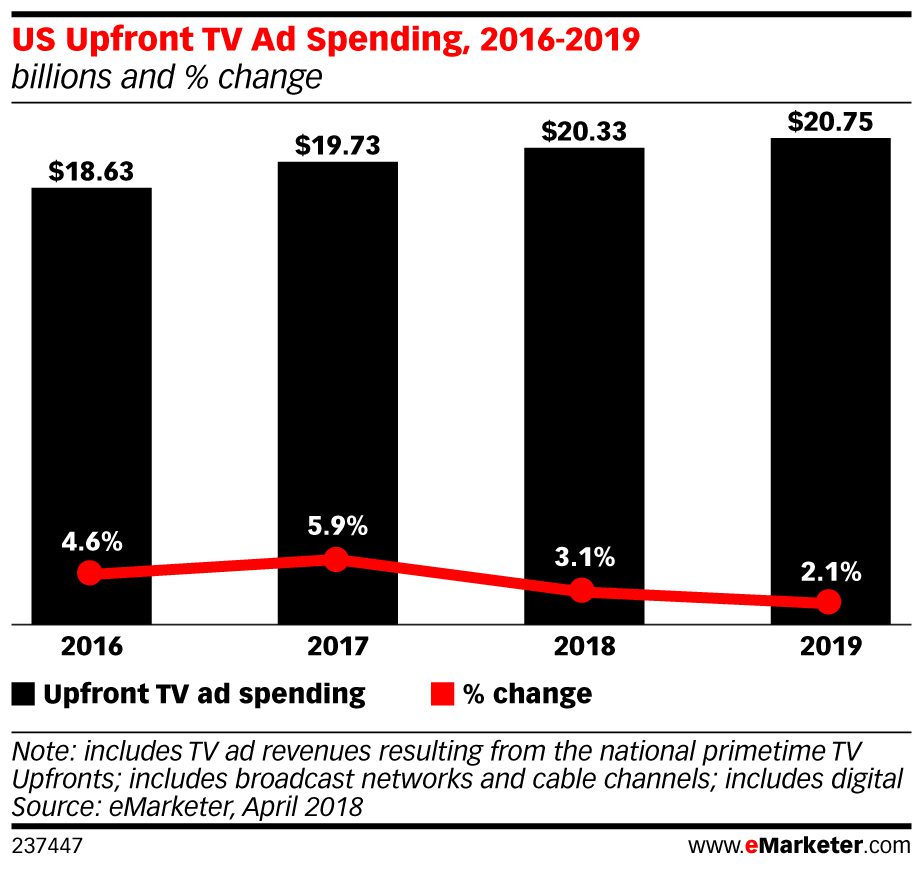If you work in TV, you’re undoubtedly gearing up for upfront season 2019, which is right around the corner. If you work on the media buying or planning side, you might be facing the issue of grappling with the ever-changing TV landscape. From data-driven targeting to connected TV to programmatic buying, the TV inventory buying process has changed dramatically in recent years. In order to keep up and even get one step ahead, it’s important for you to understand whether your media buys are actually driving consumers to take action and buy a product. But how can you do that?
The Current State of TV Upfronts
Let’s start with a little background on the upfronts, which are not going away anytime soon. After all, TV is still the safest and most effective way to connect with audiences. The upfronts present a golden way for media buyers to secure inventory for premium content — which is critical to ensure they’re reaching the most invested and engaged audiences.
Advertisers are pouring money into upfront TV buys, and the industry projections back this up. According to eMarketer, upfront TV ad spending is projected to increase 2.1% from last year to a whopping $20.75 billion. When you’re allocating such a large amount of your budget to upfront TV buys, it’s essential that you understand whether those buys are actually driving ROI or not. Not only will this enable you to prove the success of your campaigns to your manager, but it will also help you know which inventory you should pick for next year’s upfronts.
The Impact of Footfall Attribution on ROI
In order to prove whether your campaigns are working or not, you can use footfall attribution for TV. Through location intelligence, you can map TV viewership to visitation and see whether users exposed to your campaign visited your brand location after. You can then link that visit to an actual sale, to prove that your campaign is working.
In a recent study we commissioned with Advertiser Perceptions, we found that one of the biggest challenges TV advertisers currently face is the “inability to include TV in cross-platform media measurement.” Advertisers are increasingly focusing on multiple channels, wanting to understand how their efforts are performing holistically, so that they can optimize their media mix. Footfall attribution is important because it enables you to understand cross-channel ROI.
Through cross-channel incremental lift, which allocates proportional credit to each marketing touchpoint across all channels, you can see how each channel affects the other and overall performance leading up to a store visit. In this way, cross-channel incremental lift can inform how much of your budget you allocate to each channel, so that you can generate maximum ROI.
Now that you know a bit more about how to improve your TV measurement strategy, we hope you feel a little more prepared for the upfronts. If you’re looking for more information leading up to the upfronts, check out our recent TV white paper.





